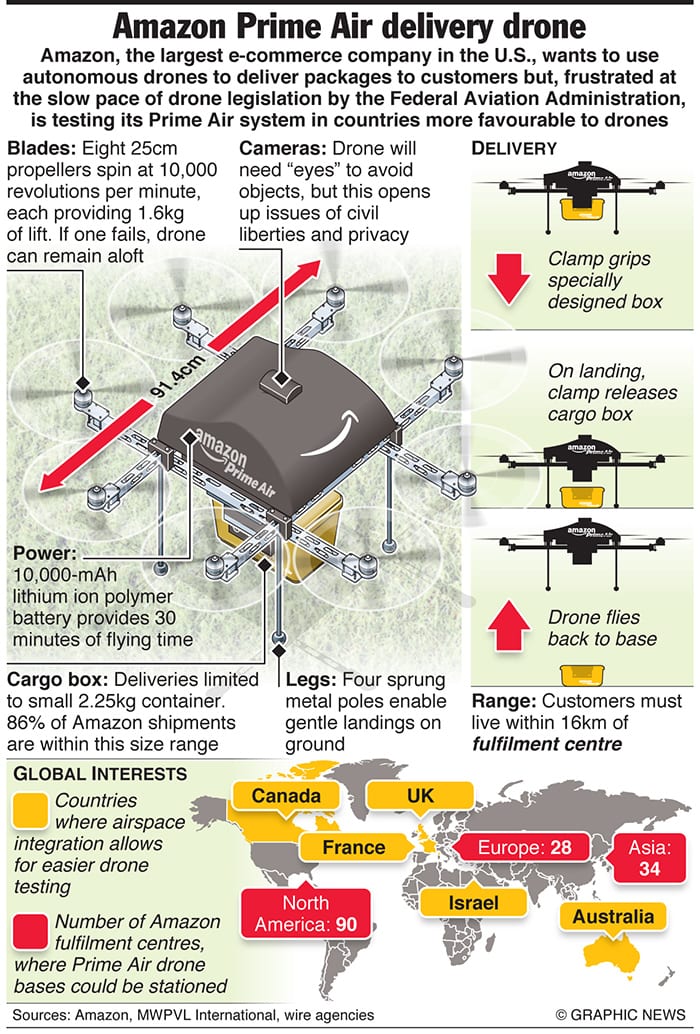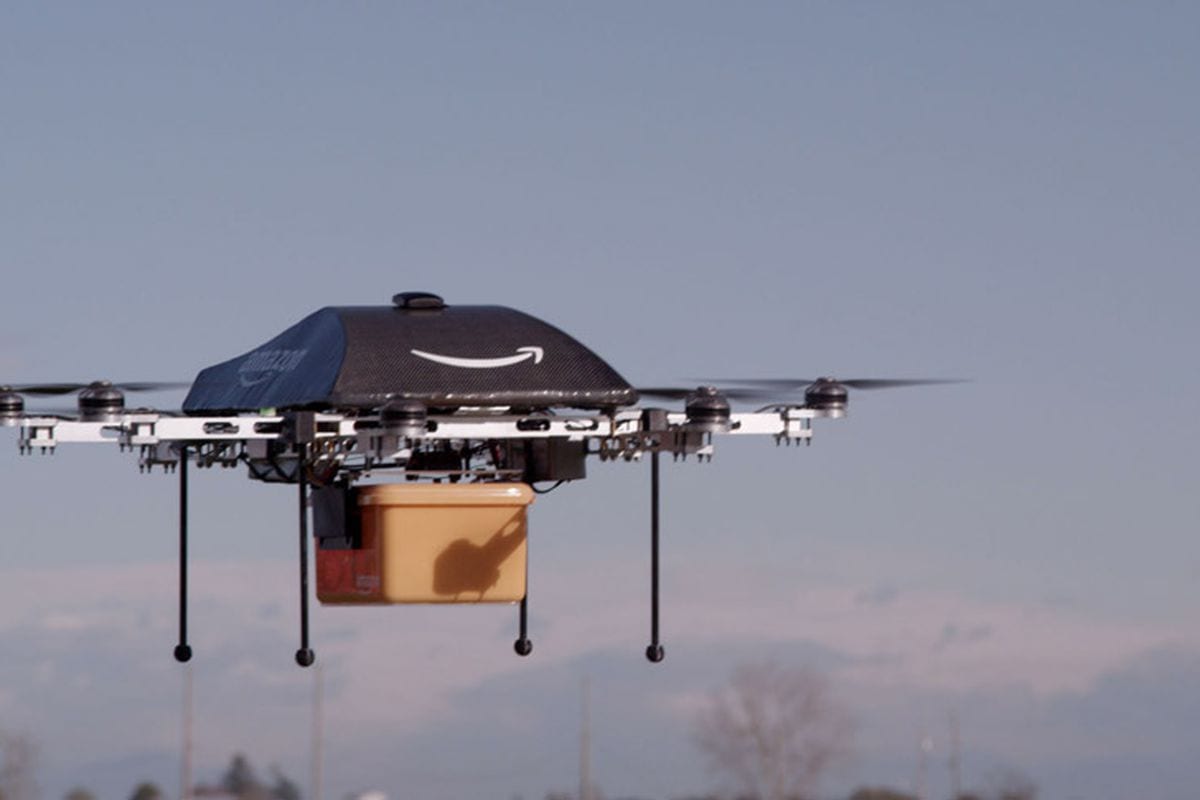Amazon has been the ecommerce leader in innovation, in particular with its immensely popular Prime service. It connects subscribers – who tender an average of $99 per year for the service – to generous two-day shipping and hassle-free returns on millions of products in its marketplace. For the annual fee, subscribers also gain access to thousands of streaming movies, TV shows and digital music via Amazon’s streaming service. All said, it’s not a bad bargain if you shop online a lot and if you are a movie or TV buff.
With Amazon recently surpassing the value of Wal-Mart, previously the world’s largest retailer, it should come as no surprise that they have something intuitive up their sleeve. This time around, it’s the next generation of package delivery: Amazon Prime Air – which will deliver packages to customers via air drone in 30 minutes or less.
What is Amazon Prime Air?
Amazon Prime Air is a package delivery service that’s being designed by Amazon. The logistics and the details are still being fine-tuned. Basically, small delivery drones will be used to deliver packages from metropolitan fulfilment centers to businesses and homes within a predetermined geographical range within 30 minutes from the order being placed.
According to Paul Misener, Amazon’s vice president for global public policy, “[Amazon] Prime Air is a future delivery service that will get packages to customers within 30 minutes of them ordering it online at Amazon.com. The goals we’ve set for ourselves are: The range has to be over 10 miles. These things [delivery drones] will weigh about 55-pounds each, but they’ll be able to deliver parcels that weigh up to five-pounds. It turns out that the vast majority of the things we sell at Amazon weigh less than five-pounds.”
How Does it Work?
Customers who are members of Amazon Prime Air simply order from the marketplace as they normally would. Except, when they go to tender payment and checkout, they will have the option, in certain circumstances and on certain products, to use Prime Air. According to Misener, this may or may not incur an added fee, “I don’t know if we’ve priced it out yet.”
As for now, it appears that the service will be offered in select test cities, once it has been made operational. Once regulations have been met, shoppers who use the service will be able to select where the drones drop their packages (e.g. front yard, back yard, door step, etc.), so that packages can be delivered whether they are home or not.
This detailed infographic, courtesy of Graphic News, provides some technical information on how the delivery service would work, and how the drones function.

Will the FAA Approve It?
Of course, any flying commercial object in U.S. airspace would be regulated by the Federal Aviation Administration (FAA). As for that hurdle, Misener has stated the company is working with regulators to get it approved. But there’s no window on exactly when it will be approved. The idea being proposed right now is a layered airspace that helps regulate air traffic and maintain a strict safety standard.
“We were thinking: Manned aircraft above 500 feet. Between 400 and 500 feet there’d be a no-fly zone—a safety buffer,” Misener said. “Between 200 and 400 feet would be a transit zone, where drones could fly fairly quickly, horizontally. And then below 200 feet, that would be limited to certain operations. For us, it would be takeoff and landing. For others, it might be aerial photography. The realtors, for example, wouldn’t need to fly above 200 feet to get a great shot of a house.”
The project could suffer setbacks if regulators do not get on board, something Misener is confident Amazon can overcome. “Challenges are there, for sure. But once we demonstrate that this is safe, we’ll be able to take it to the regulators and hopefully deploy it for our customers quickly. I’ve seen it. It’s going to happen. It’s coming.”
What About Retailers Using Amazon Fulfillment?
There’s no word on cost of participation or delivery cost just yet, for either retailers or consumers. One has a good mind to think that retailers would be subjected to similar shipping charges as they are now for Prime fulfillment. Given that Amazon taps its retailers at a 20% surcharge for all goods sold in addition to shipping fees, it’s safe to bet that participating in this service would come with added fees, with the goal of increasing sales and conversions that ultimately would offset the added cost.
The Complete Scoop on Amazon Prime Air
Take a look at this video to get the complete scoop on Amazon Prime Air. It shows you how simple it could be to get that five-pounds package delivered right to your backyard. Using a simple Amazon landing pad that is provided by the delivery service, you place your order and position the pad to where you want the drone to deliver your order. It then automatically lands and drops the package before taking flight again.










